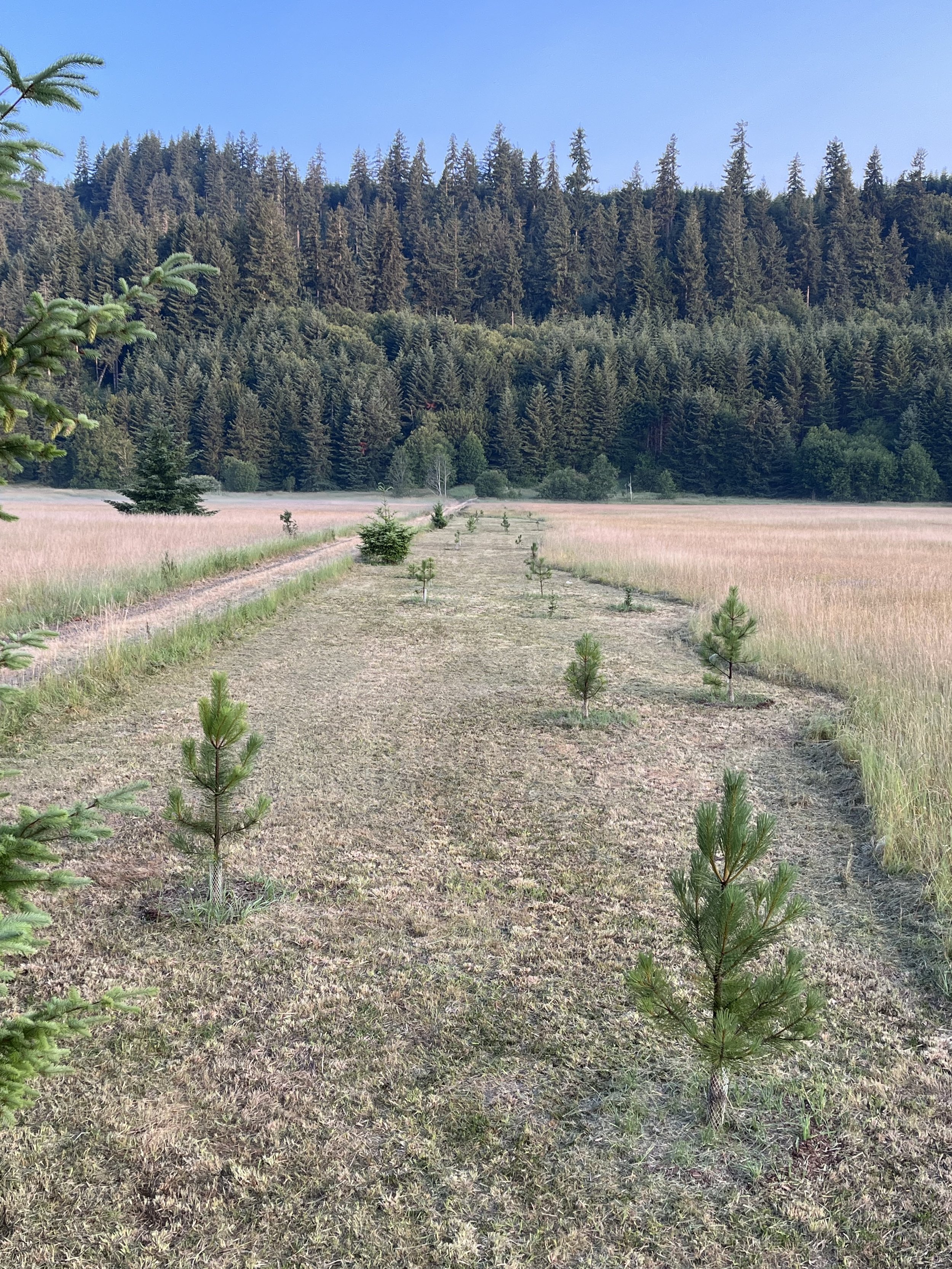A Tale of 32 Trees (pt. 1)
I recently finished reading a wonderful book called “The Hidden Life of Trees” (a Christmas gift from my mom) and one of the many points I drew from it was essentially that you can plant a tree, but you can’t plant a forest.
That might not sound right to you, but keep in mind that a forest isn’t just a large number of trees; it’s a complex ecosystem that develops over many hundreds of years, that builds and thins itself, that shares information and allocates resources via vast underground networks of mycelia.
Only a forest can plant a forest.
And the forest here is quite wonderful
But you can still plant trees.
Back in 2018, my neighbors made a small planation of about 200 saplings along the north side of what was then our shared access road. They hoped to one day buffer against the strong afternoon breezes that sweep through the valley on summer afternoons.
And the summers here have been getting longer and hotter and drier, so those saplings really suffered during their first dry season. Plus, the grass grew up around them unchecked, robbing them of critical resources, as well as aiding and abetting the field mice that love to nestle up close and chew through their soft, young bark, effectively girdling the trees before they can establish themselves.
As a result, most of that plantation didn’t make it.
But now that the land north of the road is part of my conservation scope, I’ve made my way back to the thirty two survivors to see if I can help them get a toehold.
A few Douglas firs like this one have made it so far; most of the survivors are hearty Ponderosa pines
The first step was to cut down the grass around them (sorry, field mice…please move along) and pull any close-growing weeds.
Then, each sapling got a few pounds of mulch.
Mulch helps insulate their vulnerable roots against harsh temperatures in either direction, plus it helps them retain that critical moisture when the air is hot and dry.
It also deprives the surrounding grass of sunlight, giving these fledgling trees a competitive edge.
Then I mowed a wide swath of grass around them (see below) to help concentrate resources. The heat and dryness started early this year, so I may bring them each a bit of water this month and next as well.
The rains will probably resume in September.
These little trees have a long way to go, and it will be an uphill fight for them without parents to shade them (remember what I said about a forest planting itself?), tough neighbors to shield them from those strong winds, or the amazing underground networks of mycelium to distribute resources.
And even if they survive the next few years, growing taller and stronger, the deer and elk may use them to rub the itchy velvet off their newly-formed antlers and tear off their bark - exposing the tender cambium and likely knocking them out that same season.
But that is the way of things. My contribution will be to give them such aid as I can - the rest is up to this living ecosystem.
And I will tell their ongoing story here on this site in the years ahead.
Stay tuned, friends.




